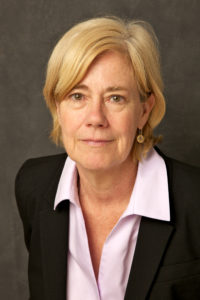MARY OTTO, THE AUTHOR OF TEETH, ON THE CHALLENGES OF BRINGING DENTAL CARE TO THOSE WHO NEED IT MOST.
 “THERE IS A LOT of shame around oral disease,” says veteran health-care journalist Mary Otto (left). “In addition to the suffering it causes, oral disease confers a real stigma upon its victims.” That stigma, she says, is rooted in inequality of access to care — a problem Otto, 62, examines in her book Teeth: The Story of Beauty, Inequality and the Struggle for Oral Health in America, published in March. Otto recently sat down with Incisal Edge to discuss broadening the availability of care.
“THERE IS A LOT of shame around oral disease,” says veteran health-care journalist Mary Otto (left). “In addition to the suffering it causes, oral disease confers a real stigma upon its victims.” That stigma, she says, is rooted in inequality of access to care — a problem Otto, 62, examines in her book Teeth: The Story of Beauty, Inequality and the Struggle for Oral Health in America, published in March. Otto recently sat down with Incisal Edge to discuss broadening the availability of care.
If you were given the proverbial magic wand to fix dental care, what’s the first thing you’d do?
I feel lucky to be able to find a pen when I need one; I can’t imagine having a wand! But your question brings a certain experience to mind: In 2007, after 12-year-old Deamonte Driver, a Maryland Medicaid child, died from complications of tooth decay, state and federal lawmakers took a hard look at the ways the system, charged with getting care to millions of vulnerable young Americans, had broken down.
Nationwide, though more than half of Medicaid [recipient] children are still not getting routine dental care, progress has been made. To make meaningful change, it’s important to take a serious look at the weak places in the system and figure out how to fix them.
Is the notion that oral health is whole-body health finally taking root?
Transformation in thinking about this issue came with the 2000 publication of then–Surgeon General David Satcher’s Oral Health in America report. He called for a health-care system that “integrates oral health effectively into overall health.” The push for integration continues, yet the challenges remain formidable: More than one million times a year, Americans show up in emergency rooms suffering from toothaches and other non-traumatic dental problems. Yet most dental care continues to be provided through a separate system that roughly one-third of Americans face significant difficulties accessing.
What about assistance from midlevel providers? Are dentists who resist them harming the profession for the sake of their immediate interest?
A number of the public-health experts I have spoken with see this as an issue that will be resolved in time. They liken the current fight to the debate in the medical world decades ago, when nurse practitioners and physicians’ assistants first came on the scene. Medical leaders raised concerns about training and patient safety, but PAs and NPs have proven themselves over time. [Experts] predict that someday we’ll look back on the current debate in dentistry the same way.
How exactly did this topic come to command your full attention?
I started writing about dental care at the Washington Post, when I covered the death of Deamonte Driver and its aftermath. I left the newspaper in a major downsizing in 2008, but then in 2009, I became a Knight Science Journalism fellow, which allowed me to spend a year at Harvard, studying at the schools of dental medicine and public health.
After the fellowship, I made sure to carve out time to continue my research and reporting for the book. I was very lucky to connect with The New Press, a nonprofit publishing house in New York that is dedicated to publishing books in the public interest.
This topic can be quite maudlin at times. What keeps you moving forward?
Hearing people’s stories inspires me most. Whether I’m listening to a dentist tell me her experiences at a rural safety-net clinic, a young mother describing her efforts to find care for her child or a researcher describing the work that goes into unlocking the riddle of some disease, I get energized by their devotion and humbled by their patience. These stories, and the way they shed light on the larger story of oral health in America, are so deserving of ongoing attention.



